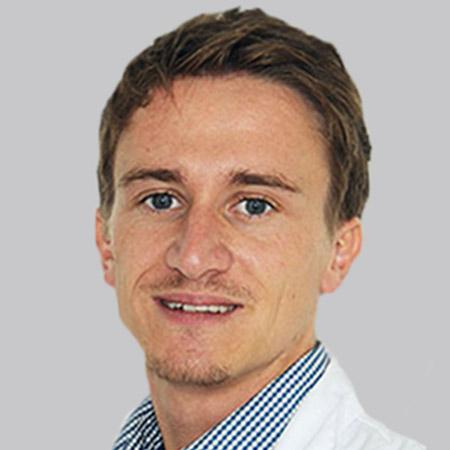Other years
Profiles of international research staff that visited the Row Fogo Centre in other years.
2018
Thomas Gattringer (Ass.Prof., Priv. Doz., Dr.med.univ., Dr.scient.med. ) - Medical University of Graz, Universitätsklinik für Neurologie (Austria)
My name is Thomas Gattringer. I am currently working as an assistant professor and consultant for neurology and neurointensive care at the University Hospital of the Medical University of Graz, which is in the south of Austria. My main research focuses on diagnosis and treatment of stroke and cerebrovascular disease with a particular interest in acute intracranial large vessel occlusion (including revascularization procedures such as mechanical thrombectomy/endovascular therapy) and also disorders of the small brain vessels (cerebral small vessel disease). From November 2017 until May 2018, I had the unique opportunity to receive funding from the Austrian Neurological Society for a research stay at the Centre for Clinical Brain Sciences, University of Edinburgh to work with Professor Joanna Wardlaw and her group. My research topic was “Understanding the Pathophysiology of Cerebral Small Vessel Disease using Dynamic MRI Methods.” I benefitted from already well-established cooperation between Professor Fazekas (former head of our department) and Professor Wardlaw, which made it easier to get into the topic and swiftly starting with the intended analysis. In my opinion, thorough pre-planning before starting with a research visit abroad is most essential. In Edinburgh, I investigated the morphological evolution of recent small subcortical infarcts (i.e. the acute manifestation of cerebral small vessel disease; also termed acute lacunar infarcts) on brain MRI. By analysing a subset of the “Mild Stroke Study 2” cohort, we could demonstrate that the vast majority of these small infarcts develop into mostly small lacunar cavities (indicating chronic tissue destruction). While demographic, clinical, and other cerebral small vessel disease-related features did not relate to long-term cavitation, blood-brain-barrier (BBB) dysfunction remained independently associated with lacune development of a former recent small subcortical infarct. This finding indicates that endothelial dysfunction might play an important role in the pathophysiology of cerebral small vessel disease-related stroke, implicating that other therapeutic agents (stabilizers of endothelial function) should be investigated for this disease in the future. In ongoing cooperation, we additionally aim to address the important question of whether the degree of cavitation might have a clinical impact (especially on cognitive function). During my time in Edinburgh, I met nice and fascinating people, gained great scientific experience and clinical insights into another system of care, and lived in an exciting city. I am very grateful for the support of the whole team and the valuable discussions regarding different aspects of stroke care and neuroimaging. Particular thanks again to Professor Joanna Wardlaw, Dr Maria Valdes Hernandez, Dr Gordan Blair, Professor Rustam Salman and my office colleagues Dr Gerry Thompson and Dr Grant Mair. I’m looking forward to ongoing cooperation with Edinburgh! |
Other visiting research fellows
Dr Sarah Atwi - Sunnybrook Research Institute, University of Toronto (Canada)
Dr Sarah Atwi research profile - Perivascular Spaces in Small Vessel Diseases Website


